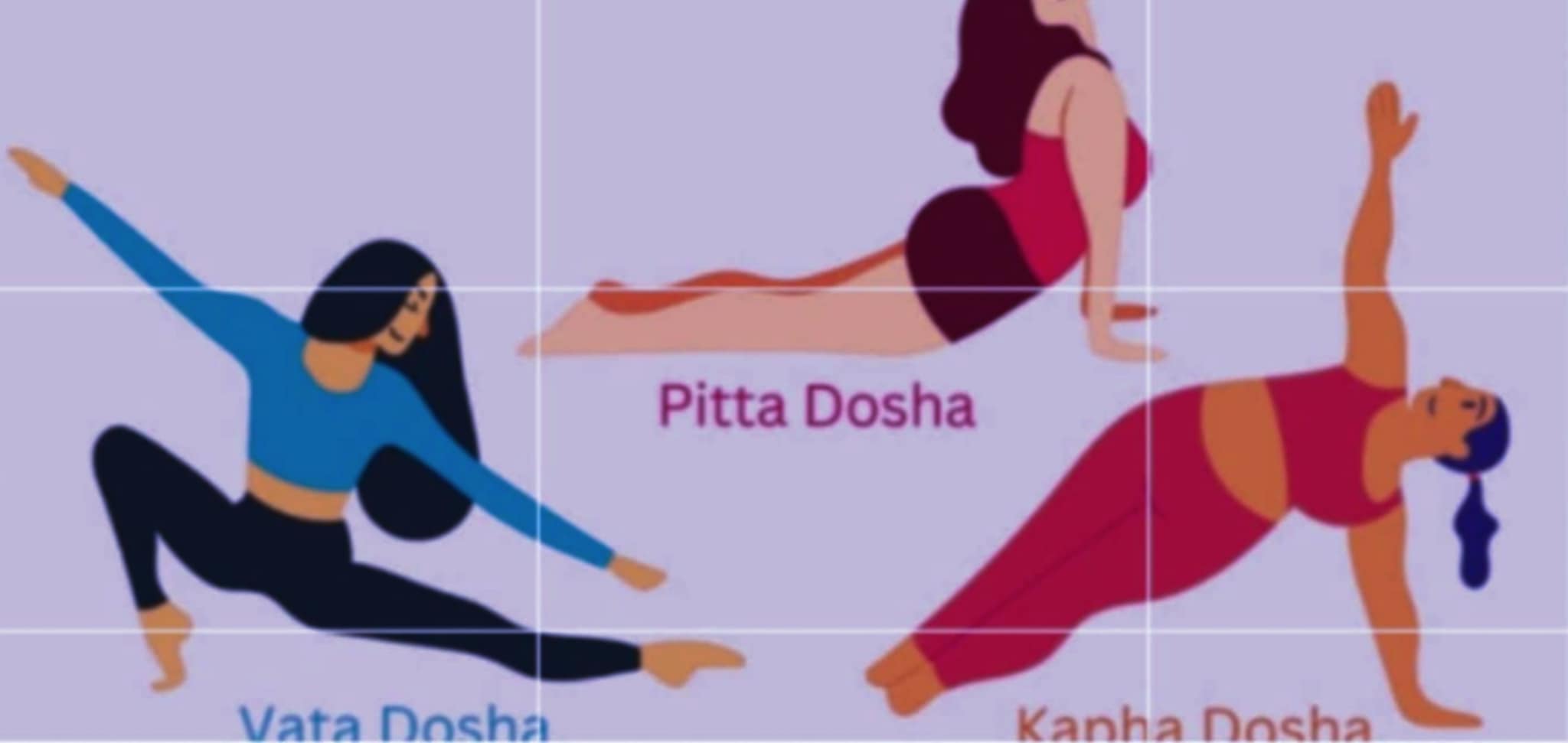
🧘 How Yoga Helps Balance the Doshas
In Ayurveda, health means balance — especially the balance of the three doshas: Vata, Pitta, and Kapha. When these energies go out of balance (Vikruti), they affect not only the body, but also the mind and emotions.
This is where yoga becomes a powerful tool. Yoga helps balance the doshas by working on both the body and the mind — through movement (asana), breath (pranayama), and awareness (meditation).
Let’s break it down:
🔹 For Vata Dosha (Air + Ether)
Out of balance: Anxiety, restlessness, dryness, insomnia, cold
Yoga approach:
- Slow, grounding, steady movements
- Standing and seated poses that build stability (like Tadasana or Paschimottanasana)
- Warm, gentle breathwork (like Nadi Shodhana)
- Focus on routine, warmth, and stillness
🔸 For Pitta Dosha (Fire + Water)
Out of balance: Anger, inflammation, overheating, perfectionism
Yoga approach:
- Cooling, calming practices
- Forward bends and twists (like Child’s Pose or Supine Twist)
- Gentle breathwork (like Sheetali)
- Avoid intense, heated flows
- Focus on relaxation and acceptance
⚪ For Kapha Dosha (Earth + Water)
Out of balance: Lethargy, heaviness, congestion, lack of motivation
Yoga approach:
- Energizing and uplifting sequences
- Backbends, standing poses, and strong flows (like Sun Salutations)
- Stimulating breathwork (like Kapalabhati)
- Focus on movement, heat, and lightness
👩🏫 The Role of the Yoga Teacher
A knowledgeable yoga teacher trained in Ayurveda can adapt the practice based on your current dosha imbalances. That might mean modifying the pace, posture choices, breathing techniques, or even the tone of the session — helping you get the most healing benefit from your practice.
Yoga isn’t one-size-fits-all. When guided with awareness of your Prakruti (constitution) and Vikruti (current imbalance), yoga becomes a deeply personalized form of medicine.


